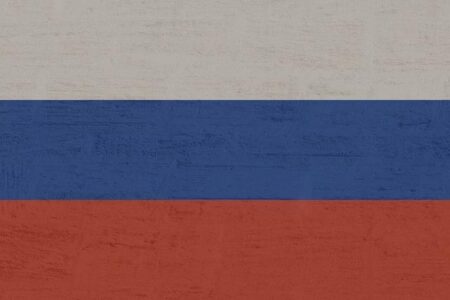As tensions escalate between the United States and Russia over the ongoing conflict in Ukraine, recent tariff threats from the Trump administration have introduced a new dynamic to the geopolitical landscape. Analysts and diplomats are now examining whether these economic pressures could compel Russian President Vladimir Putin to reconsider his position and engage in peace negotiations. This article explores the implications of Washington’s hardline approach and its potential impact on the fragile path toward resolving the Ukraine crisis.
Trump’s Tariff Threats and Their Potential Impact on Russia’s Economic Stability
President Trump’s recent threats to impose sweeping tariffs on Russian exports have sent shockwaves through Moscow’s economic circles. The prospect of elevated import duties targeting key sectors such as energy, metals, and agriculture risks exacerbating existing financial vulnerabilities fueled by international sanctions and fluctuating oil prices. Analysts warn that a significant escalation could destabilize Russia’s fragile economic growth, increasing inflationary pressures and reducing government revenues critical for sustaining military expenditures amid the ongoing conflict in Ukraine.
- Energy Sector Exposure: Russia relies heavily on energy exports, which constitute over 40% of its federal budget income.
- Forex Reserves at Risk: Tariffs could strain Russia’s ability to maintain foreign exchange reserves and stabilize the ruble.
- Potential Ripple Effects: Increased tariffs may disrupt supply chains, discourage foreign investment, and spur capital flight.
| Sector | Export Value (USD Billion) | Tariff Impact Level |
|---|---|---|
| Energy | 160 | High |
| Metals | 40 | Moderate |
| Agriculture | 25 | Moderate |
If the economic strain intensifies, it could pressure the Kremlin to reconsider its strategic priorities, particularly its stance on the conflict in Ukraine. A sustained economic downturn might limit Putin’s ability to finance prolonged military operations, creating potential openings for diplomatic negotiations. While the Russian government has displayed resilience to Western punitive measures in the past, the compounded effects of tariffs, along with internal economic frictions, might serve as a catalyst persuading Moscow to explore a political settlement.
Analyzing Putin’s Strategic Calculus Amid Increasing Western Economic Pressure
Vladimir Putin’s ongoing strategy appears increasingly influenced by the intensifying economic sanctions and tariff threats coming from the West, particularly the recent stance adopted by the Trump administration. These measures are designed to squeeze Russia’s financial and industrial sectors, which remain heavily reliant on global markets for energy exports and technological imports. Key challenges confronting the Kremlin include:
- Isolation from Western banking networks restricting financial liquidity
- Escalating costs in defense supply chains due to tariffs and embargoes
- Pressure on Russian allies whose economies depend on trade with Europe and the US
In response, Moscow is recalibrating its diplomatic posture, weighing the high economic costs against the strategic value of maintaining its stance on Ukraine. The calculus has shifted to include potential compromises that could ease sanctions if a tangible peace process is initiated. Below is a brief overview of economic indicators influencing Russian decision-making on the conflict:
| Indicator | Impact | Timeline |
|---|---|---|
| Oil Export Revenues | Down 15% year-over-year | Q1 2024 |
| Foreign Currency Reserves | Decreased by $50B | Past 6 months |
| Industrial Output | Stagnant with mild contraction | Recent quarter |
Policy Recommendations for Leveraging Economic Measures to Advance Ukraine Peace Negotiations
Economic pressure remains one of the most viable tools to catalyze progress in the stalled Ukraine conflict. Policymakers should prioritize coordinated international sanctions that strategically target key sectors of Russia’s economy without triggering undue global instability. This includes enhancing restrictions on energy exports, cutting off access to advanced technology imports, and tightening financial sanctions on Russian oligarchs with close Kremlin ties. Such measures can incrementally raise the costs of continued aggression, incentivizing Moscow to engage constructively in peace talks.
Moreover, financial aid structures aimed at Ukraine need to be paired with conditions that underscore diplomatic negotiation commitments from all parties involved. Key recommendations include:
- Implementing targeted tariffs that directly impact Russia’s export capabilities without collateral damage to global markets.
- Creating economic relief packages for European nations heavily dependent on Russian energy to reduce resistance to sanctions.
- Leveraging multilateral financial institutions to support reconstruction promises contingent on measurable ceasefire adherence.
| Economic Measure | Target Sector | Intended Outcome | |
|---|---|---|---|
| Energy Export Restrictions | Oil & Gas | Reduce Kremlin revenue | |
| Technology Import Bans | Defense & Manufacturing | Hinder military modernization | |
| Economic Measure |
Target Sector |
Intended Outcome |
|
| Energy Export Restrictions | Oil & Gas | Reduce Kremlin revenue | |
| Technology Import Bans | Defense & Manufacturing | Hinder military modernization | |
| Financial Sanctions on Oligarchs | Wealth & Investment | Limit funding for aggressive policies |
If you want me to help with any of the following, just let me know:
– Summarizing the key points in plain text.
– Creating a call-to-action or executive summary.
– Developing a presentation slide outline based on this section.
– Formatting it for different platforms or documents.
Would you like me to proceed with any of those?
Wrapping Up
As tensions continue to simmer on multiple fronts, the interplay between U.S. economic policies and Russia’s strategic calculations remains a focal point in the evolving Ukraine conflict. While President Trump’s tariff threats introduce a new variable into the geopolitical landscape, their potential to directly influence Putin’s approach to peace talks is uncertain. Observers will be closely watching whether economic pressure from Washington can serve as a catalyst for diplomatic progress or if the complex realities on the ground will render such measures ineffective. The coming weeks may prove decisive in assessing the true impact of these maneuvers on the prospects for a resolution to the crisis.




